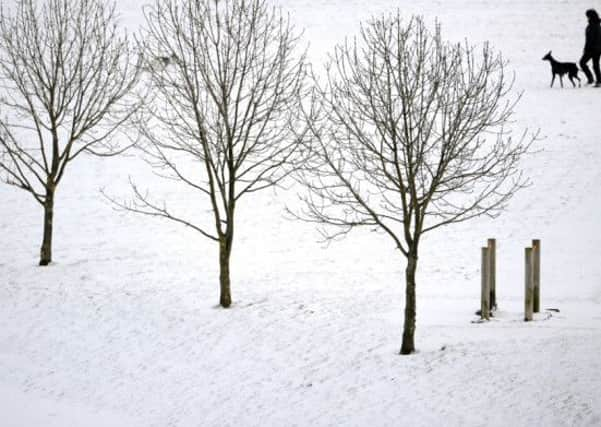Weather archive '˜could predict heavy snowfalls in Scotland'


Researchers at the University of Edinburgh said analysis of the logged data has revealed how closely snowfall in the country is linked to a weather phenomenon in the Atlantic.
The study shows how large-scale changes in air pressure in the North Atlantic can have a direct impact on where - and for how long - there will be snow in Scotland.
Advertisement
Hide AdAdvertisement
Hide AdThey said the findings could lead to improved forecasting that benefits local authorities and transport bodies, as well as businesses associated with snow sports.
Michael Spencer, of the university’s School of GeoSciences, who led the study, said: “Easterly air flows are known to bring cold weather from the Arctic, causing severe winters like those seen in 2009 and 2010.
“For the first time, we have quantified the relationship between snow cover in Scotland and changing air pressure.
“As seasonal forecasts of the North Atlantic Oscillation (NAO) continue to improve, earlier and more informed predictions of snowfall will be possible.”
When NAO readings indicate high pressure, northern Europe tends to experience mild conditions owing to incoming warm, westerly winds. Low index readings suggest cold air is likely to blow across the continent from the east, bringing with it more wintry conditions.
By comparing snowfall records which began in 1875 with NAO index readings over the same period, the researchers gauged the impact of pressure changes on snow cover in Scotland.
The study shows that - between 1875 and 2013 - low-lying regions of Scotland were more likely to be covered with snow when the NAO index was low. When the index was high, areas below 750m were largely unaffected by snow.
The link was strongest in south west areas, where most land is low-lying, and eastern areas, which are the most exposed to easterly air flows, the team said.
In inland areas where much of the land is higher, the link is not as pronounced as low temperatures mean snow can fall regardless of changes in North Atlantic air pressure.